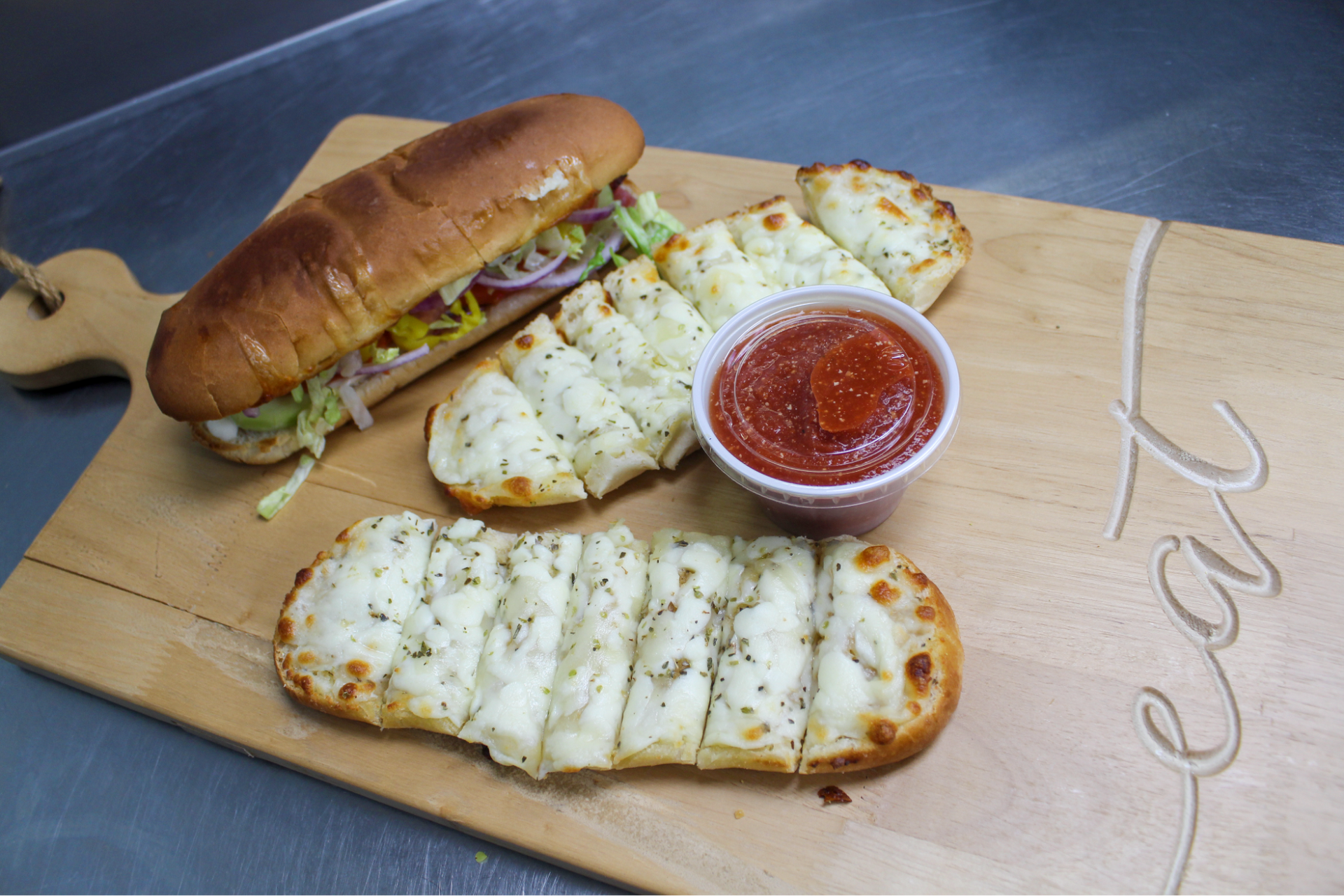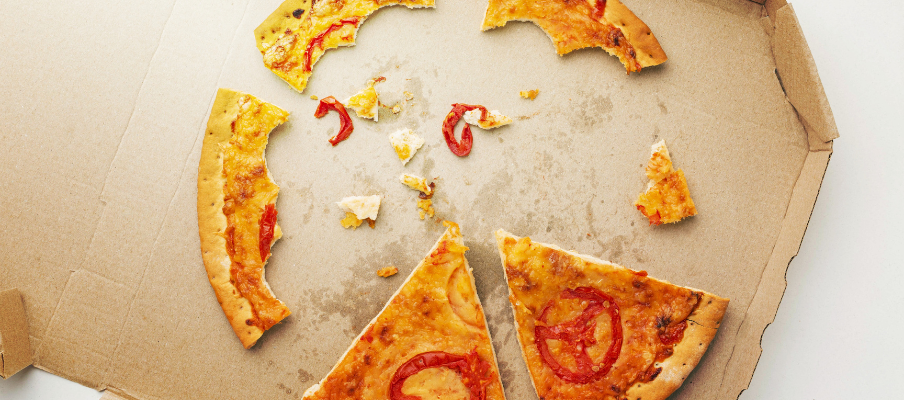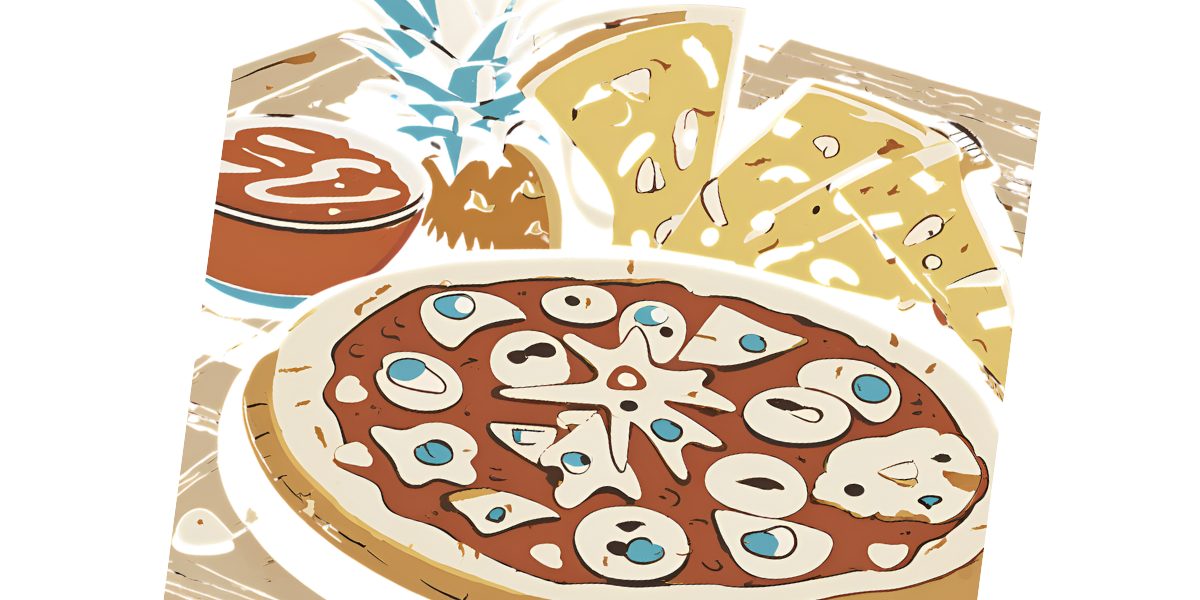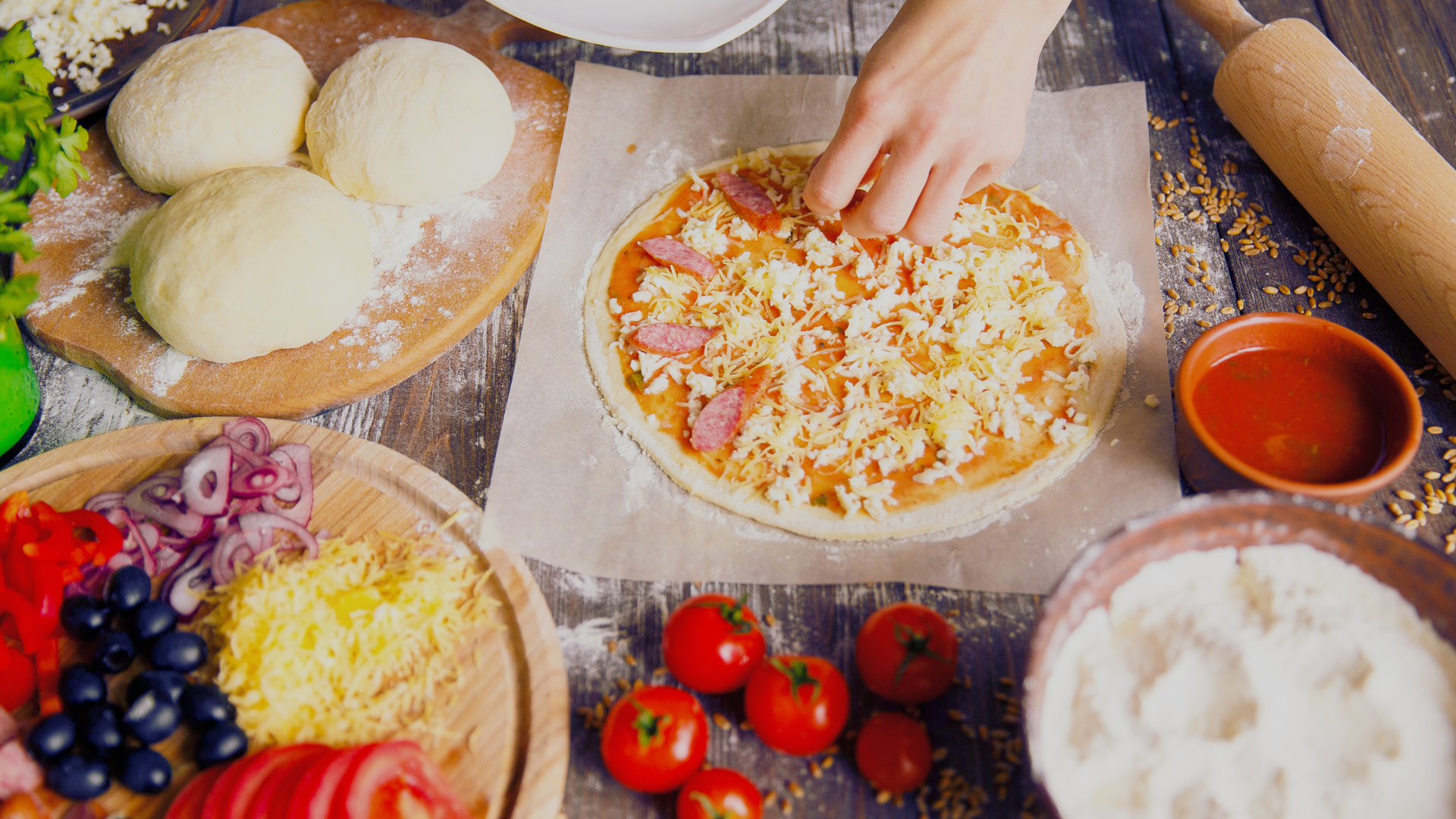Garlic Bread Recipe: The Perfect Sidekick to Your Pizza Night
Garlic bread is often considered the perfect accompaniment to a delicious pizza. We all know it’s for that buttery, savory taste, but there is more to garlic bread than that! Do you know where it originated and where it may have come from?
Garlic bread has become such a staple alongside Italian food that we’ve come to expect it with our pizza, so let’s take a closer look at this most beloved of breads.
HOW TO MAKE THE PERFECT GARLIC BREAD
There are as many opinions on the perfect garlic bread as there are pages on the internet, so we’re here to give tips on finding the right recipe for your taste buds.
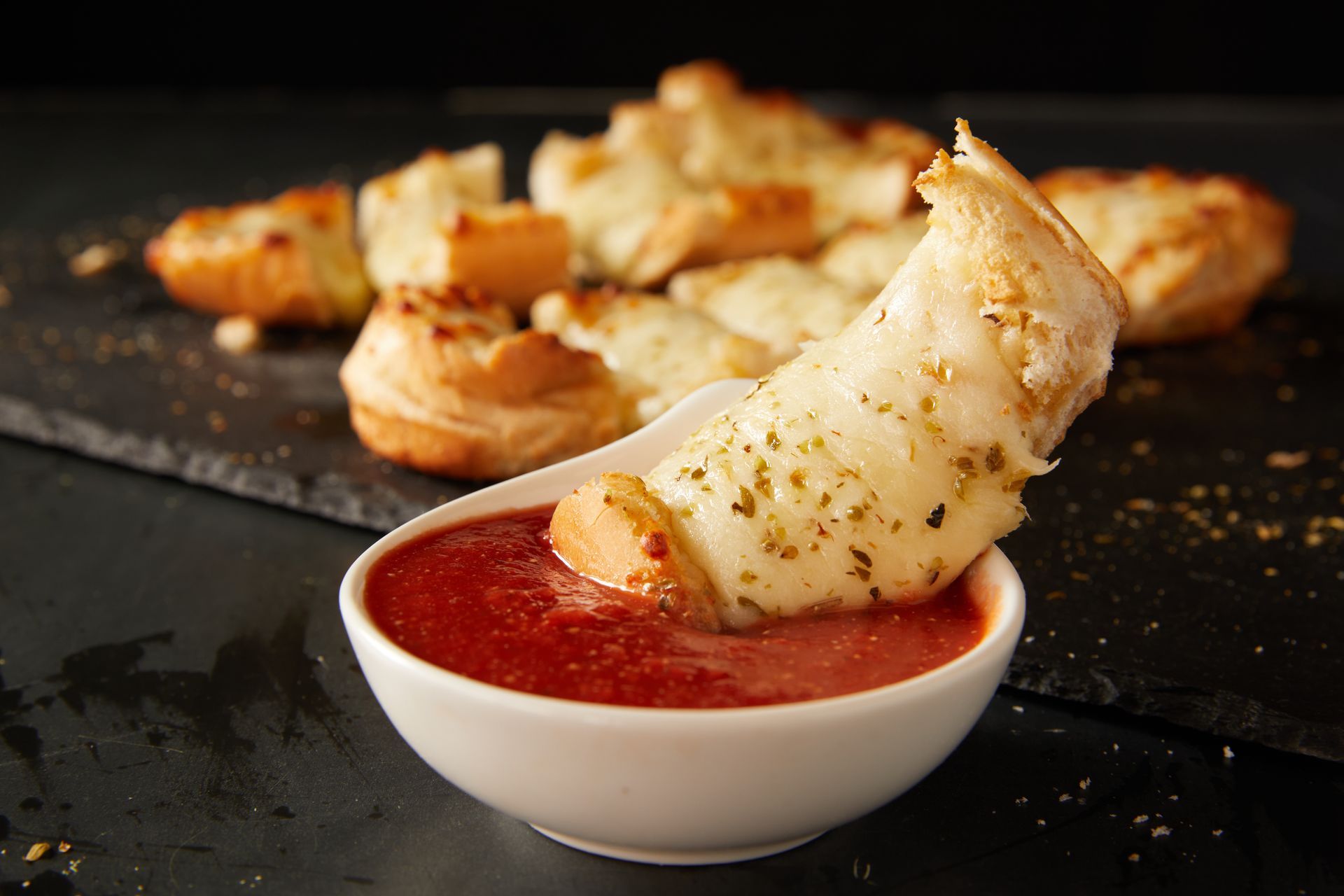
To Prep Your Garlic Bread:
1. Choose Your Bread
Select a style of bread that makes your heart sing. French bread, Italian loaf, sourdough, ciabatta, it’s all good, as long as it’s around a pound in size. Slice it fairly thick. Most people agree a chewy, somewhat pillowy center for garlic bread is a good thickness. Too thin and it can be hard to eat.
2. Mince & Roast Your Garlic
Most of the recipes boasting about being “the best” have one thing in common: the garlic is fresh, and they mince and roast it themselves. No garlic powder was harmed in the making of these garlic bread recipes. 4 cloves of garlic is a good amount, roasted in an oven set to 400℉ for 30-40 minutes. Cover in foil for soft, golden roasted garlic.
3. Butter Your Bread
Use softened butter. Salted, unsalted, that’s a matter of taste. So is how much butter you use, particularly if you’re watching your waistline. What is pretty universal is getting the softened butter to melt into the bread’s nooks and crannies. That’s the good stuff. ⅓ cup to ½ cup should do it.
4. Season Your Garlic Bread
Add herbs and salt to taste. Some people use parsley, others basil, and even a few others mix in an Italian blend. It’s up to you!
H3: Choose Your Cheese! Or Not!
Cheese is optional! For those who do, shredded parmesan, mozzarella, provolone, romano, or a blend of Italian cheeses may be the way to go. However, they’re only added in the last couple of minutes of baking so they stay melty. Up to ½ a cup of cheese or to taste is enough to get some melty goodness on top.
Now that the ingredients are done, the baking itself is pretty straightforward.
To Bake the Garlic Bread
1. Prep the Baking Sheet
Cover a baking sheet with tin foil or parchment paper for easy cleanup while you’re preheating your oven to 425℉.
2. Assemble Garlic Bread
Slice your bread in half lengthwise and place each half-face up on the baking sheet.
3. Make Garlic Butter Mixture and Brush on Bread Halves
In a bowl, mix together your softened butter, roasted and minced garlic, herbs, and salt until well combined. Then, using a spoon, brush, or utensil you like best, spread the mixture on the cut side of the bread, covering the surface as well as possible.
4. Ready, Set, Bake!
Bake for 10-15 minutes, or until the edges are slightly crisping up. For cheese lovers, add the cheese in the final 2 minutes of baking. For crispier bread, bake for 3-5 minutes more, watching closely for the desired level of doneness.
5. Indulge in the Best Garlic Bread Ever
Remove from the oven and slice before enjoying immensely.
The History of Garlic Bread
If the sincerest form of flattery is imitation, then bruschetta should be flattered by garlic bread’s mimicry because garlic bread gets its roots from bruschetta.
Southern Italy, where garlic grew prolifically, was known for garlic-inspired recipes. Italian bread, such as a ciabatta loaf, would be brushed with minced garlic, drizzled with olive oil, salted, and then toasted.
Bruschetta inspired garlic bread but was itself inspired by Ancient Roman flatbread drizzled with olive oil, salt, and herbs.
How Garlic Bread Arrived in the United States
Garlic bread was brought to the Americas by a wave of Italian immigrants between 1889 and 1924, who used the local ingredients available to recreate their favorite homemade garlic bread. Because olive oil was less available, they substituted butter. The French baguette was more affordable and widely available as well, so that became the more common bread.
Today, modern twists on garlic bread also have unique herbs and salts, cheesy garlic bread, and ways of toasting, from garlic bread in the oven to toasting it on the grill and even using a broiler. There are a plethora of garlic bread recipes for almost every taste.
Why Garlic Bread is the Perfect Complement for Pizza
Let’s consider for a moment the bruschetta, which inspired garlic bread. It has also evolved to include tomatoes and basil, which are flavors common to modern-day pizza sauce.
If one were to stop and think about it, garlic bread and bruschetta can be considered somewhat like deconstructed pizza. Especially if one were to dip their garlic bread into the marinara sauce that sometimes accompanies an order at a pizza restaurant.
Smooth, savory olive oil or butter and pillowy bread make for a delectably chewy bite, while the marinara (dip) or tomatoes (bruschetta topping), salt, and herbs offer the zing to the tastebuds. The garlic underpins the whole recipe and elevates the experience to perfection.
Creative Uses for Leftover Garlic Bread
We know what you’re thinking: leftover garlic bread? Is there such a thing?
On the off chance this happens, throwing it out would be a travesty. Garlic bread makes fantastic croutons. You can also make amazing breadcrumbs, which can be used as a flavorful breading for chicken or pork chops.
Using Garlic Bread to Make Croutons:
Make sure you have about 3 cups’ worth of garlic bread to cut into cubes. Drizzle them with some more olive oil, and if you want, grate a few tablespoons of parmesan cheese over them.
Place them in a preheated oven at 375℉ and bake for 10 minutes or until golden brown. Let cool entirely before storing for a couple of days in an airtight container at room temperature.
Using Garlic Bread to Make Breadcrumbs:
Cut the garlic bread into 1” cubes, spread them out on a tray, and leave them to dry on the countertop for a day or two.
They need to be dry and hard before putting them into a food processor. Make sure your food processor can handle bread like this, and add them in small batches for best results.
If you don’t have a food processor, put the dried bread into a good-quality freezer bag and crush it with a sturdy pan or good rolling pin. You can also freeze fresh bread and grate it with a cheese grater.
Next step: bread your favorite meat or add to your favorite recipe and enjoy the extra depth of garlic flavor knowing you’ve unlocked a secret code in the kitchen.
It’s almost worth it to order extra garlic bread from Plaza Pizza® just so you can have leftovers for these exact ideas. Also, learn here how to reheat pizza for the best taste!
Order pizza online now and have your favorite Plaza Pizza® slice and garlic bread (with or without cheese) ready for pick-up or delivered to you for dinner tonight!
You can order pizza in Newark, Ohio, or order your pizza in Heath Ohio.
1 Source: “Garlic Bread History—From Ancient Rome to the Americas” foodicles.com
